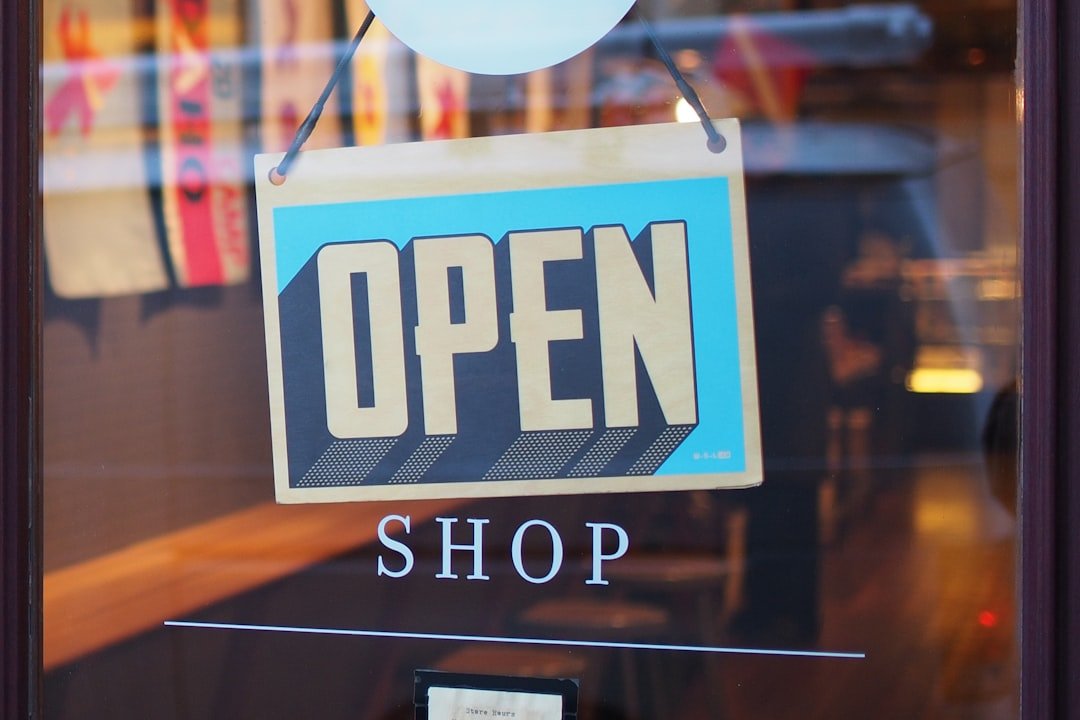The retail landscape has undergone a seismic shift over the past few decades, transitioning from traditional brick-and-mortar establishments to a dynamic online marketplace. This evolution is not merely a change in shopping venues; it represents a fundamental transformation in consumer behavior, expectations, and the overall shopping experience. In the early days of retail, physical stores were the primary touchpoints for consumers.
Shoppers would visit local shops, engage with sales staff, and experience products firsthand. However, the advent of the internet revolutionized this model, offering consumers unprecedented convenience and access to a global marketplace.
The rise of giants like Amazon and Alibaba demonstrated that consumers were not just looking for products; they were seeking convenience, speed, and a seamless shopping experience. This shift forced traditional retailers to rethink their strategies, leading to the emergence of hybrid models that combine both online and offline elements. Today, the retail landscape is characterized by a blend of physical stores and digital platforms, each playing a crucial role in meeting the diverse needs of consumers.
Key Takeaways
- Retail has evolved from traditional brick-and-mortar stores to online platforms, creating a shift in consumer behavior and expectations.
- Understanding the omnichannel experience is crucial for retailers to provide a seamless and integrated shopping journey for customers across various touchpoints.
- Technology has significantly impacted the retail customer experience, offering opportunities for personalization and improved convenience.
- Bridging the gap between online and offline retail is essential for retailers to meet the changing needs and preferences of modern consumers.
- Creating seamless customer journeys involves integrating online and offline channels to provide a cohesive and convenient shopping experience.
Understanding the Omnichannel Experience
Understanding Customer Behavior Across Channels
A successful omnichannel strategy goes beyond simply having an online store alongside physical locations.
For example, a customer might research a product online, visit a store to see it in person, and then complete the purchase through a mobile app.
Interconnected Touchpoints for Consistency
Retailers must ensure that these touchpoints are interconnected, providing consistent messaging and experiences regardless of where the interaction occurs. By doing so, they can foster a sense of trust and reliability that encourages repeat business.
Fostering Trust and Loyalty Through Omnichannel Experience
By providing a seamless and cohesive customer journey, retailers can enhance customer satisfaction and loyalty. The omnichannel experience is essential for retailers aiming to stay ahead in today’s competitive market.
The Impact of Technology on Retail CX

Technology has become a driving force behind the evolution of customer experience (CX) in retail. From artificial intelligence (AI) to machine learning and data analytics, technological advancements are reshaping how retailers engage with consumers. These tools enable businesses to gather insights into customer preferences, streamline operations, and personalize interactions at scale.
For example, AI-powered chatbots are revolutionizing customer service by providing instant support and assistance. Retailers can deploy these bots on their websites or social media platforms to answer common queries, recommend products, and even facilitate transactions. This not only enhances the customer experience but also frees up human resources for more complex tasks.
Additionally, data analytics allows retailers to track customer behavior in real-time, enabling them to make informed decisions about inventory management, marketing strategies, and promotional campaigns.
Bridging the Gap Between Online and Offline Retail
Despite the rise of e-commerce, physical stores remain an integral part of the retail ecosystem. However, bridging the gap between online and offline retail is essential for creating a unified customer experience. Retailers must leverage their physical locations as extensions of their digital presence rather than viewing them as separate entities.
One effective strategy is to implement click-and-collect services, allowing customers to order products online and pick them up in-store. This not only drives foot traffic to physical locations but also provides an opportunity for retailers to engage with customers directly. Additionally, integrating inventory management systems across channels ensures that customers have access to real-time product availability information, reducing frustration and enhancing satisfaction.
Creating Seamless Customer Journeys
A seamless customer journey is paramount in today’s competitive retail landscape. Consumers expect fluid transitions between online and offline interactions without encountering friction or confusion. To achieve this, retailers must map out the entire customer journey, identifying key touchpoints where improvements can be made.
For instance, consider a scenario where a customer browses a retailer’s website but decides to visit a physical store for further exploration. If the retailer has implemented features such as personalized recommendations based on online behavior or in-store associates equipped with mobile devices to access customer profiles, the transition becomes effortless. By anticipating customer needs at each stage of their journey, retailers can create an experience that feels intuitive and personalized.
Leveraging Data for Personalized Customer Experiences

Unlocking Valuable Insights
Analyzing customer data, including purchase history, browsing behavior, and demographic information, provides retailers with a deeper understanding of what drives consumer decisions. This insight enables businesses to create targeted marketing campaigns that resonate with their audience.
Data-Driven Strategies for Success
Personalized email marketing campaigns, for instance, can significantly increase conversion rates by recommending products based on past purchases. Similarly, loyalty programs that offer tailored rewards based on individual spending habits foster a sense of exclusivity and appreciation among customers.
Fostering Meaningful Connections
By utilizing data-driven strategies, retailers can create meaningful connections with their audience, ultimately driving sales and brand loyalty. By doing so, businesses can establish a competitive edge in today’s crowded market, setting themselves apart from competitors and building a loyal customer base.
The Role of Mobile in Integrating Online and Offline CX
Mobile technology plays a pivotal role in bridging the gap between online and offline customer experiences. With smartphones becoming ubiquitous, consumers increasingly rely on mobile devices for shopping-related activities—whether it’s researching products, comparing prices, or making purchases on-the-go. Retailers must recognize this trend and optimize their mobile strategies accordingly.
Mobile apps can serve as powerful tools for enhancing the omnichannel experience. For instance, retailers can develop apps that allow customers to scan barcodes in-store for additional product information or exclusive offers. Furthermore, location-based services can send personalized promotions to customers when they are near a physical store, encouraging spontaneous visits.
By integrating mobile technology into their overall strategy, retailers can create a more cohesive experience that resonates with today’s tech-savvy consumers.
The Importance of Physical Stores in the Digital Age
While digital channels continue to grow in prominence, physical stores still hold significant value in the retail landscape. They serve as experiential hubs where customers can interact with products firsthand and receive personalized assistance from knowledgeable staff. In fact, many consumers still prefer shopping in-store for certain categories—such as clothing or electronics—where tactile experiences play a crucial role in decision-making.
Moreover, physical stores can enhance brand storytelling by creating immersive environments that reflect a retailer’s identity and values. For example, brands like Apple have successfully transformed their stores into community spaces where customers can engage with products while attending workshops or events. By leveraging their physical presence effectively, retailers can create memorable experiences that deepen customer connections and drive brand loyalty.
Embracing Augmented Reality and Virtual Reality in Retail
As technology continues to advance, augmented reality (AR) and virtual reality (VR) are emerging as game-changers in retail. These immersive technologies offer innovative ways for consumers to interact with products before making a purchase decision. For instance, AR applications allow customers to visualize how furniture would look in their homes or try on clothing virtually without stepping foot in a store.
Retailers like IKEA have successfully implemented AR features within their apps, enabling customers to see how products fit into their living spaces through their smartphone cameras. Similarly, VR experiences can transport customers into virtual showrooms or fashion shows, creating excitement around new collections. By embracing these technologies, retailers can enhance engagement and provide unique experiences that set them apart from competitors.
The Future of Retail: Merging Online and Offline Strategies
Looking ahead, the future of retail will be defined by an even greater integration of online and offline strategies. As consumer expectations continue to evolve, retailers must remain agile and responsive to changing trends. The lines between digital and physical shopping will blur further as technology advances and consumer preferences shift.
To thrive in this environment, retailers should prioritize flexibility in their operations—whether it’s through adopting new technologies or reimagining store layouts to accommodate experiential elements. Additionally, fostering a culture of innovation within organizations will be crucial for staying ahead of competitors and meeting evolving consumer demands.
Building a Successful Omnichannel Retail Strategy
Crafting a successful omnichannel retail strategy requires careful planning and execution across multiple dimensions. First and foremost, retailers must invest in technology that enables seamless integration between channels—this includes robust inventory management systems and customer relationship management (CRM) tools that provide real-time insights into consumer behavior. Furthermore, training staff to deliver exceptional service across all touchpoints is essential for creating a consistent brand experience.
Empowering employees with knowledge about both online and offline offerings ensures they can assist customers effectively regardless of where interactions occur. Finally, continuous evaluation of performance metrics will help retailers identify areas for improvement within their omnichannel strategy. By analyzing data related to customer engagement, conversion rates, and overall satisfaction levels, businesses can refine their approaches over time.
In summary, the evolution of retail has ushered in an era where omnichannel experiences are paramount for success. By understanding consumer behavior, leveraging technology effectively, and creating seamless journeys across channels, retailers can position themselves as leaders in this dynamic landscape. As we look toward the future of retail—where online and offline strategies merge more than ever—those who embrace innovation will undoubtedly thrive in an increasingly competitive marketplace.
In a recent article on marketing analytics and data insights, the importance of understanding customer behavior and preferences in order to drive successful retail strategies is highlighted. This aligns with the concept of integrating online and offline customer experiences discussed in “The Future of Retail” article. By leveraging predictive modeling and market forecasting techniques, retailers can optimize their ecommerce strategies and create a seamless shopping experience for customers across all channels.
FAQs
What is the future of retail?
The future of retail involves integrating online and offline customer experiences to create a seamless and personalized shopping journey for consumers.
Why is integrating online and offline customer experiences important for the future of retail?
Integrating online and offline customer experiences is important for the future of retail because it allows retailers to meet the evolving needs and preferences of modern consumers who expect a seamless and personalized shopping experience across all channels.
How can retailers integrate online and offline customer experiences?
Retailers can integrate online and offline customer experiences by implementing omnichannel strategies that connect their physical stores with their online platforms, offering services such as click-and-collect, in-store returns for online purchases, and personalized recommendations based on customer data.
What are the benefits of integrating online and offline customer experiences for retailers?
The benefits of integrating online and offline customer experiences for retailers include increased customer satisfaction, higher sales conversion rates, improved brand loyalty, and a competitive edge in the retail market.
What technologies are driving the integration of online and offline customer experiences in retail?
Technologies such as mobile apps, beacon technology, RFID, and AI-powered analytics are driving the integration of online and offline customer experiences in retail by enabling retailers to track customer behavior, deliver personalized promotions, and provide a seamless shopping experience across all touchpoints.



